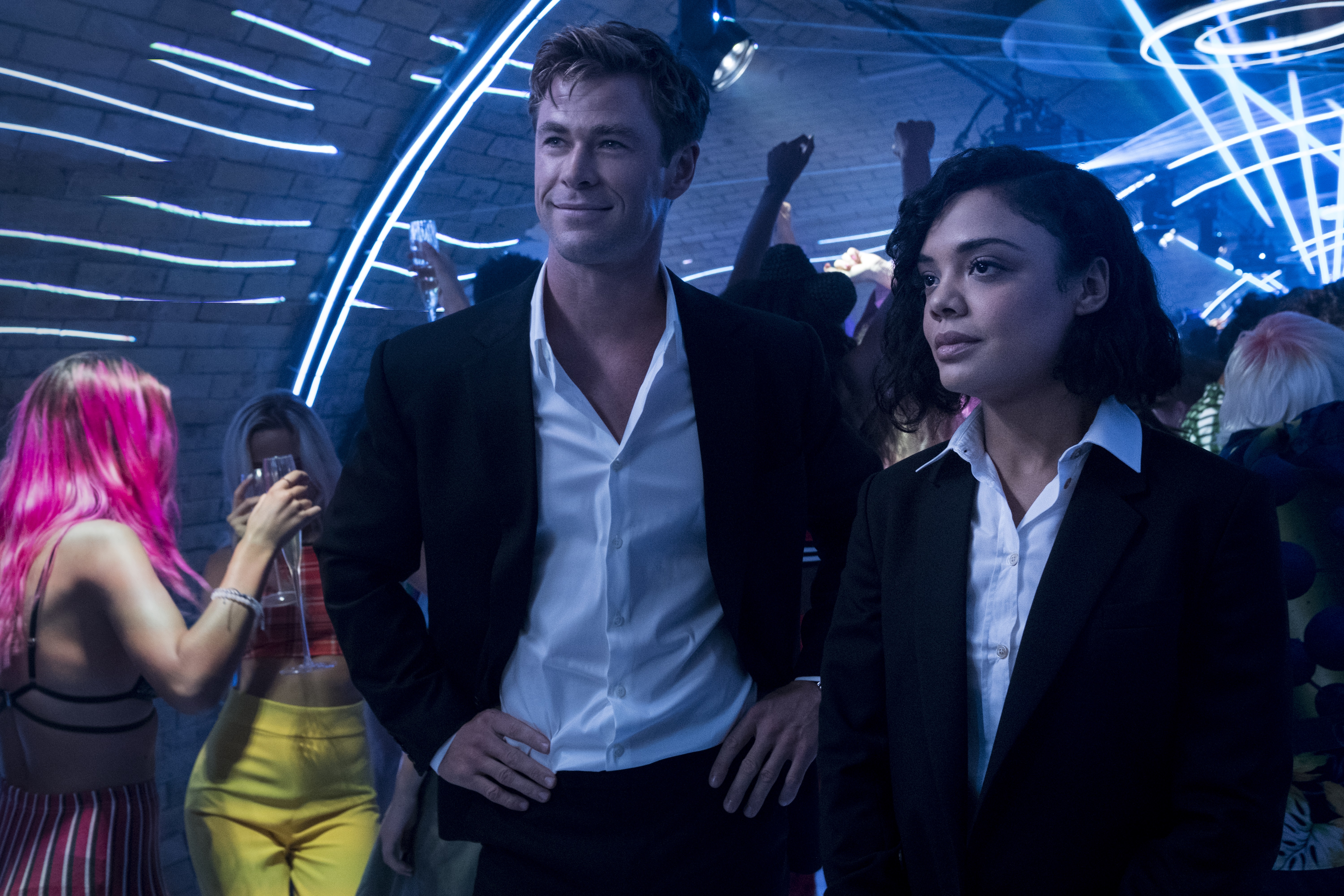

The Arquillians would hand over the galaxy to the Baltians, ending a long war. Further changes were made during post-production to simplify the plotline involving the possession of the tiny galaxy. The change to a fight sequence annoyed Rick Baker, as their animatronic Bug had to be replaced with computer-generated imagery. One of these had Laurel Weaver being neuralyzed and K remaining an agent. It was originally meant to be a humorous existential debate between Agent J and the Bug, and five potential replacements were discussed. Five months into the shoot, the crew realized their ending was unexciting. Why do they need eyes? So Rick did these great designs, and I'd say, 'That's great - but how do we know where he's looking?' I ended up where everyone else did, only I took three months". Sonnenfeld also changed a lot of the film's aesthetic during pre-production: "I started out saying aliens shouldn't be what humans perceive them to be. He had to have approval from both director Barry Sonnenfeld and executive producer Steven Spielberg: "It was like, 'Steven likes the head on this one and Barry really likes the body on this one, so why don't you do a mix and match?' And I'd say, because it wouldn't make any sense". Rick Baker led the special effects of the film, which was the most complex in his career to date. ILM provided most of the special effects. Being the arrival point of aliens on Earth, Welch felt MIB HQ had to resemble an airport. He cited influences from Finnish architect Eero Saarinen, who designed a terminal at John F. Production designer Bo Welch designed the MIB headquarters with a 1960s tone in mind, because that was when their organization is formed. He also felt much of the city's structures resembled flying saucers and rocket ships. Sonnenfeld decided to change the location to New York City, because the director felt New Yorkers would be tolerant of aliens who behaved oddly while disguised. Much of the initial script drafts were set underground, with locations ranging from Kansas to Washington DC and Nevada. Men in Black was delayed so as to allow Sonnenfeld to make it his next project after Get Shorty. They actually saw the film later and decided he was inappropriate. Sonnenfeld was attached to Get Shorty (1995), so they approached Les Mayfield to direct, as they had heard about the positive reception to his remake of Miracle on 34th Street. Parkes and MacDonald wanted Barry Sonnenfeld as director because he had helmed the darkly humorous The Addams Family and its sequel Addams Family Values. Parkes and Laurie MacDonald optioned the rights to The Men in Black in 1992 and hired Ed Solomon to write a very faithful script. The film is loosely based upon the comic book The Men in Black by Lowell Cunningham. Production Development Men in Black (1997) Y indicates a younger version of the character.An empty, dark grey cell indicates the character was not in the film, or that the character's official presence has not yet been confirmed.This section includes characters who will appear or have appeared in the series. Unlike its predecessors, Men in Black: International received mostly negative reviews and was a box office disappointment, grossing only $253 million worldwide, making it the lowest grossing film in the series.Ĭast and crew Principal cast Agent O from Men In Black 3 returns and Frank the Pug appears in a cameo after appearing in the first two films. In the spin-off film, rookie MIB recruit Molly Wright and Agent H from MIB's UK branch investigate the activities of the shape-shifting alien duo Twins who are seeking a dangerous artifact, only to discover that there is a more dangerous threat: a mole in the agency. Main article: Men in Black: International


 0 kommentar(er)
0 kommentar(er)
